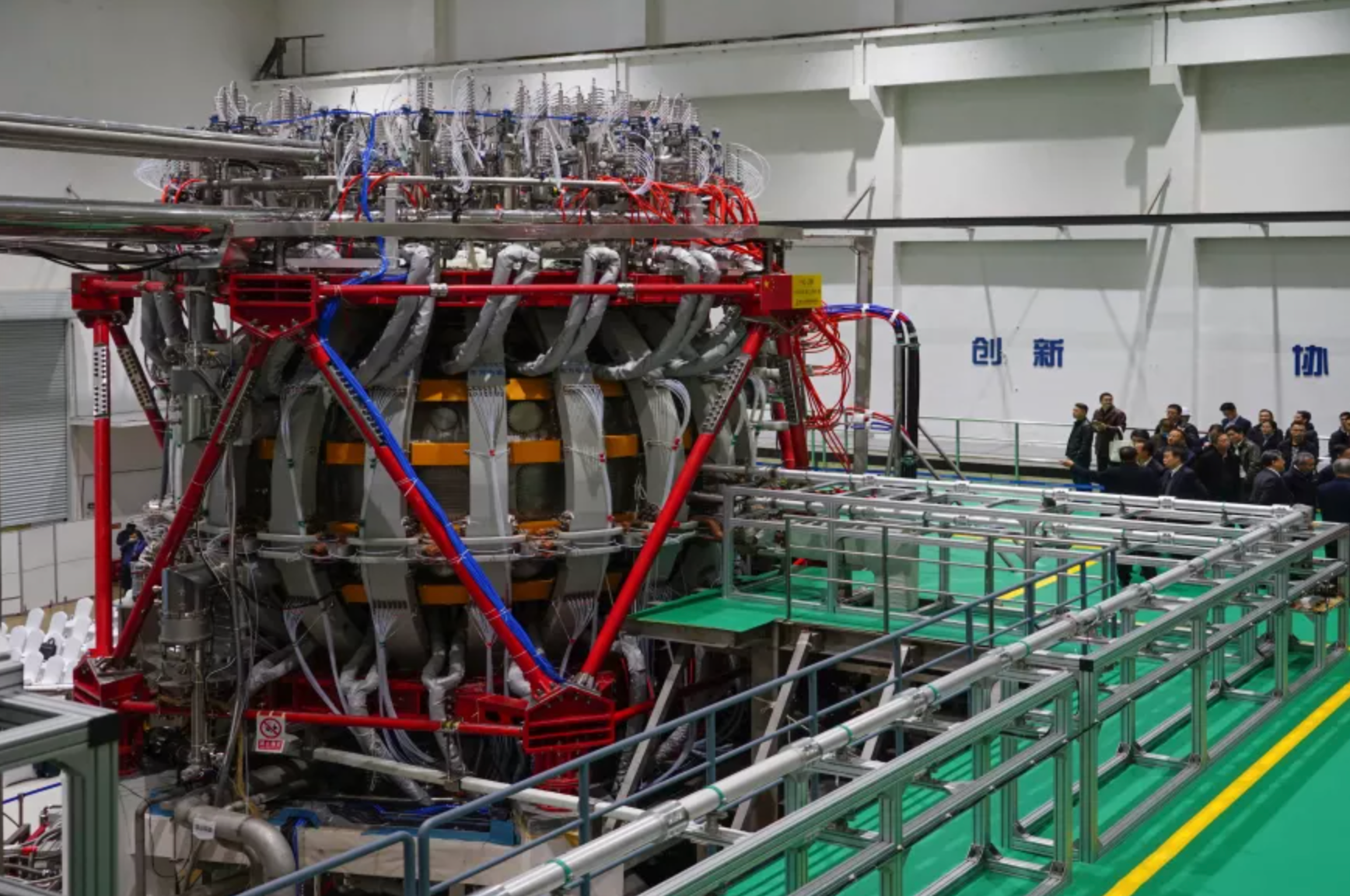China's $1 trillion 'artificial sun'

Tokamak 'artificial sun' of China
Recently, the technology dubbed "Artificial Sun" of China has set a new world record after reaching a temperature 5 times hotter than the Sun in more than 17 minutes.
According to Xinhua , the EAST Nuclear Fusion Reactor (based on the Tokamak advanced superconducting test line) can maintain a temperature of 158 million degrees Fahrenheit (70 million degrees Celsius) for 1,056 seconds.
This achievement has brought scientists a small but significant step closer to creating an almost unlimited source of clean energy on Earth.
That's because fusion energy is considered the "ultimate energy" for a carbon-neutral energy future, because hydrogen and deuterium are abundant on Earth, clean, and have fewer emissions.
China's experimental nuclear fusion reactor broke the previous record, set by Tore Supra (France) in 2003. In addition, EAST also set another record in May 2021. by remaining for 101 seconds at a temperature of 120 million degrees Celsius. For comparison, the core of the Sun has a temperature of about 15 million degrees.
Gong Xianzu, head of the research team at the Institute of Plasma Physics of the Chinese Academy of Sciences, asserted that this operation has laid a solid scientific and experimental foundation for operating a fusion reactor under real-world conditions.
For nearly a century, scientists have been trying to harness the power of nuclear fusion - also known as the process by which stars ignite. By fusing hydrogen atoms to create helium under extreme pressure and temperature, the experiment was able to convert matter into light and heat, generating enormous amounts of energy without emitting greenhouse gases. or radioactive waste.
But recreating the conditions found inside stars is no simple task. The most common design for a fusion reactor, the tokamak, works by heating rods of plasma before locking it inside a chamber that reacts with a strong magnetic field.

In 1958, Soviet scientist Natan Yavlinsky successfully designed the first tokamak, but no one has yet been able to create an experimental reactor that can produce more energy than it consumes.
EAST - China's potential fusion reactor project is the product of cooperation between 35 countries - including every state of the European Union, Great Britain, China, India and the US makes the above theory becomes possible, containing the world's strongest magnets, making it capable of generating a magnetic field 280,000 times stronger than the one around the Earth.
The project, which will likely cost China more than $1 trillion by the time the trial ends (June 2022), is expected to go into operation in 2025, which will provide scientists with new insights. know more deeply about the practice of harnessing the power of the stars on Earth.
According to Live Science
- He calculated the Pi 5 trillion digits
- Successfully developed an artificial arm that can feel real
- Detecting a bright group of galaxies more than 3 trillion times the Sun
- America is once again the country with the most powerful supercomputer in the world
- Artificial meat $ 330,000 to the oven
- 700 million trillion planets are not like Earth
- Successfully developing artificial muscles like real ones, being able to reproduce themselves
- 4.5 trillion cigarette filters per year are killing the world's plants
- What is Artificial Intelligence? What is AI (artificial intelligence)?
- China spends 45 trillion dong on natural science
- The world's fastest camera can capture 5 trillion frames per second
- This is the rarest element in the Earth, not yet observed, it has disappeared into nowhere!
 Norway built the world's tallest wooden tower
Norway built the world's tallest wooden tower Kremlin
Kremlin Ashurbanipal: The oldest royal library in the world
Ashurbanipal: The oldest royal library in the world Decoding the thousand-year construction of Qin Shihuang shocked the world
Decoding the thousand-year construction of Qin Shihuang shocked the world Discover the world's first reactor that can produce endless energy
Discover the world's first reactor that can produce endless energy  Plasma fusion engine could enable intergalactic travel
Plasma fusion engine could enable intergalactic travel  New Zealand company moves closer to unlimited fusion energy
New Zealand company moves closer to unlimited fusion energy  Hundred times hotter than the core of the Sun, this country's rocket engine leaves American and Chinese rockets in the dust
Hundred times hotter than the core of the Sun, this country's rocket engine leaves American and Chinese rockets in the dust  100 MW power generation fusion reactor
100 MW power generation fusion reactor  French artificial sun sets plasma record
French artificial sun sets plasma record 